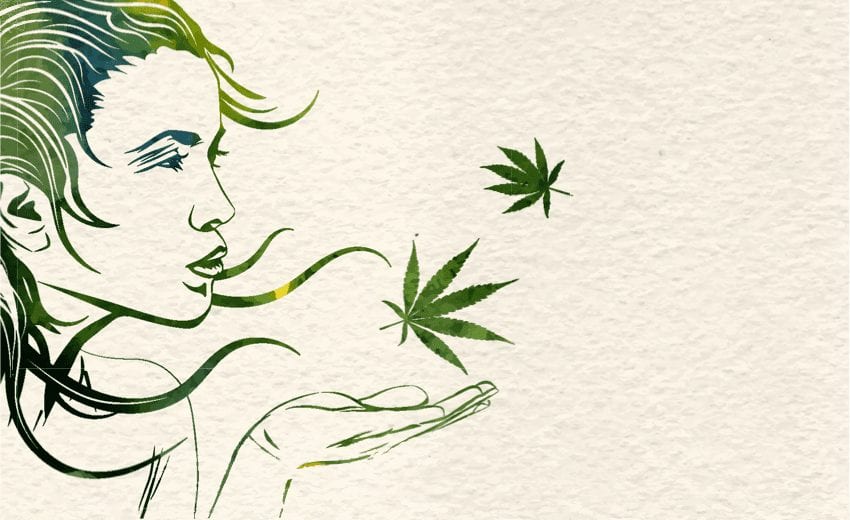
A celebration of some of the high points in the long and twisted history of cannabis.
Is cannabis legal where you live? More and more Americans can say yes to that. That’s something to celebrate—the positive changes in cannabis laws, from greater medical access in many U. S. states to nationwide legalization as Canada has just done. Clearly, we live in saner times (at least as far as cannabis acceptance is concerned).
The start of a year is a good time to take stock of where we are and what we’ve been through to get here. We can so easily forget how very far we’ve come. So, I’ve pulled off the bookshelf my favorite compendium of cannabis law and lore, Martin A. Lee’s Smoke Signals: A Social History of Marijuana—Medical, Recreational, and Scientific, to refresh my memory. Lo and behold, we’re right in the middle of two important cannabis anniversaries, one of 80 years (plus one) and the other coming up on 50. October 1937 saw the end, in the U.S. anyway, of centuries of trust in cannabis as the federal government spewed out oodles of scary falsehoods in support of the passage of the Marihuana Tax Act. October 1970 ratcheted up the fear by placing cannabis on the Schedule I list, meaning it’s a public menace with no medical applications.
But those are really downers, nothing to celebrate. The propaganda generated by these milestones goes a long way toward explaining why we’ve had such an uphill struggle all these years though. Let’s turn our attention to some of the many courageous people and actions that countered government bias. This will be anything but a comprehensive list; that would take every page of the magazine and more. Instead, the focus here is on some personal favorites.
Let’s start with cannabis heroes. Peter Maguire and Mike Ritter’s book Thai Stick: Surfers, Scammer, and the Untold Story of the Marijuana Trade honors a whole slew of laid-back heroes, the surfers who risked everything to smuggle cannabis products into the U.S. and, in the process, connected the dots on a global market. Thanks, dudes!
As the word “untold” suggests, many cannabis heroes have tried to stay below the legal radar. Some were outed by being busted. The great jazz trumpeter Louis Armstrong comes to mind, busted in 1930. Basketball Hall of Fame legend Kareem Abdul-Jabbar and his legit medicine (for migraines) got nabbed by U. S. Customs agents in a Canadian airport in 1998.
Other heroes sought out the court of public opinion by being intentionally visible. First up chronologically is Dr. William Woodward, counsel for the American Medical Association, who took on Congressional witch-hunters in 1937. To quote Martin Lee’s book, Woodward “challenged [their] claim that cannabis was a dangerous drug with no therapeutic value.” Then, on page 99 of Smoke Signals, there’s a marvelous photo from 1965 of poet Allen Ginsberg with a huge sign around his neck that reads, “Pot Is Fun.” And dear to many hearts is the activist Jack Herer, who wrote the classic The Emperor Wears No Clothes, published in 1985.
Also in the 1980s, Dr. Donald Abrams, chief of hematology and oncology at San Francisco General Hospital, constantly pushed back against city and federal obstructionists in his efforts to study the effectiveness of cannabis in caring for HIV patients. He said, “Every place I turn there’s an obstacle in my way. It’s not medical—it’s political.” (Lee, p. 230) And there’s the amazing Captain Howard Wooldridge, retired Michigan police detective, who in 2010 twice rode his pinto pony Misty across the U.S., and then throughout California, wearing a T-shirt that read, “Cops Say Legalize Pot. Ask Me Why.” See a photo of him with Misty on page 379 of Lee’s book.
Others on the medical side include the beloved San Francisco legend of the 1980s, Brownie Mary, who baked and distributed for free up to 15,000 cannabis-infused brownies a month to HIV patients at S.F. General. Israeli scientist Raphael Mechoulam still continues work he began in 1964, when he was the first to synthesize THC. In the 1990s, his team discovered that mammalian brains, including human ones, synthesize their own cannabinoid compounds, one of which was given the exquisite name anandamide.
Last, but never least, is the former National Institute of Mental Health psychiatrist Dr. Tod Hiro Mikuriya (what a perfect middle name). Martin Lee records that he “rediscovered the forgotten medical [cannabis] literature and brought it to the attention of physicians and scientists… Almost single-handedly, he kept the issue alive…” Doctor Tod, as he affectionately came to be known, smoked his first reefer in Mexico in 1959 and shared pipes of kif with North African Berber tribesmen in 1966. In paper after professional paper, he championed the cause of the many therapeutic uses for cannabis, culminating in his editing of the ground-breaking compilation, Marijuana Medical Papers.
In the category we might call “Truth Silenced,” we discover a century of disregarded governmental reports disputing negative language and legislation about cannabis, and not just in the U.S. Ignored reports include the 1894 British Indian Hemp Commission Report, New York City Mayor Fiorello LaGuardia’s 1944 blue ribbon panel, the 1972 Shafer Commission report that so rankled Richard Nixon and the 1982 release of a six-year study by the National Academy of Sciences, which Ronald Reagan disregarded. These writers and researchers dared to stand up for truth.
Here’s a last note, not taken from Martin Lee’s “Smoke Signals” but from my local newspaper (the Times-Standard in Humboldt County, California). On December 21, 2018, the paper reported that Donald Trump had just signed into law a comprehensive agricultural bill that included the complete legalization of hemp. Causes for celebration keep on coming.



Leave a Reply